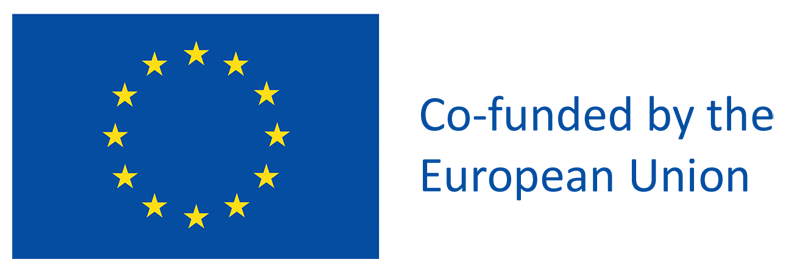
CITIZENS INVOLVEMENT
Citizen involvement in MammoScreen: Empowering collaboration and co-creation for a healthier future

CITIZENS INVOLVEMENT
Citizen involvement in MammoScreen: Empowering collaboration and co-creation for a healthier future
This section is dedicated to citizen involvement in MammoScreen project. In recent years, there has been a growing recognition of the value and importance of engaging citizens in the research and development of innovative healthcare solutions, notably in medical technology (MedTech).
Following MedTech Europe Guidance on the interactions between the medical technology industry and Patients Organisations, this project has been devised to include the patients and citizens’ voice.
MammoScreen’s collaborative approach empowers individuals to actively participate in shaping the future of healthcare, driving advancements, and improving patient outcomes.
Why are initiatives such as the MammoScreen project needed?
Breast cancer is the most common cancer in women worldwide, affecting 1 in 8 women and mammography is the gold standard technology for breast cancer screening.
However, it has limitations and potential drawbacks, such as the use of radiation. Age and screening frequency have been defined considering mammography risk-benefit ratio. Indeed, there are risks associated with repetitive mammographic exams and low sensitivity in dense breasts, limiting the use in younger women or in reduced time intervals.
In general, women are eligible for biannual screening only after the age of 50 (45 in some countries/regions). Nevertheless, recent studies from IARC show that women aged under 50 account for 29% of new cases and 21% of death 14.
MammoScreen project contributes at overcoming these drawbacks, enabling all women, independently from their age, to access a more inclusive technology that can be a pivotal in early breast cancer detection.
MammoScreen: Accessibility and trust in building a community through citizens.
Criteria for inclusion in the project
The clinical study will involve 10 centres in 5 different European countries: Italy, Spain, Portugal, Poland and Switzerland, for a total of 10,000 women. Each centre will enrol healthy volunteers between 45 and 74 years old (according to local screening protocols), already included in breast cancer screening programmes and will be selected by the investigators of each centre. Therefore, it is not possible to submit applications to join this study. Nevertheless, the outcomes of this study have the potential to improve the early diagnosis of breast cancer, and to help improve women’s quality of life and health.
POTENTIAL DISCLAIMER: The information provided on this webpage is for informational purposes only and does not constitute medical advice or an offer to participate in clinical trials. The study complies with applicable regulations, including the Medical Devices Regulation (EU) 2017/745 (MDR) and the In Vitro Diagnostic Devices Regulation (EU) 2017/746 (IVDR). For more details, please see the official registry website https://clinicaltrials.gov. The study is conducted in accordance with Regulation (EU) 536/2014 on clinical trials.
Citizens' involvement
Here are some key reasons why citizen involvement in MammoScreen is crucial:
Relevance and user-Centric Design
Citizens, especially those who have experienced breast cancer or have been screened for it, possess valuable insights and perspectives. Involving them in the implementation of the project, MammoScreen wants to ensure that the device is designed with their reported experience (comfort, preferences, and specific needs in mind). Their input can contribute to user-friendly features, such as minimizing discomfort, optimizing ease of use, and accommodating diverse body types.
Acceptability and trust
Citizen involvement builds trust between the developers of MammoWave® and the people who will use it. By involving citizens, we ensure that they have the opportunity to contribute to the decision-making process and voice their concerns, thus enabling them to accept and adopt the technology. This may help people overcome barriers to screening, such as fear, anxiety, or misconceptions, leading to higher participation rates and earlier detection of breast cancer.
Accessible and equitable Healthcare
Citizen involvement promotes considerations of accessibility and equity in healthcare. By engaging citizens from different backgrounds, socioeconomic statuses, and geographical locations, we hope to identify and address potential barriers to access detection methods, including Mammowave®. This could involve addressing affordability, ensuring availability in underserved areas, and considering specific needs of marginalized populations. Citizen involvement helps prevent the technology from exacerbating healthcare disparities and ensures that it benefits everyone, regardless of their circumstances.
Ethical considerations
Engaging citizens in MammoScreen and in the implementation and evaluation of MammoWave® helps addressing ethical concerns. Informed consent, privacy protection, and responsible data handling are essential aspects of any healthcare technology. By involving citizens, we can establish transparent processes, educate individuals about their rights, and ensure that their personal information is handled with care and respect.
Advocacy and empowerment
Citizen involvement in MammoScreen empowers individuals to take an active role in their own health and advocate for their needs. By participating in the development and evaluation of this device, citizens can influence policies, raise awareness, and contribute to the improvement of breast cancer screening programs. This involvement fosters a sense of ownership, empowerment, and collective responsibility for healthcare outcomes.
Conclusion
Citizen involvement in MammoScreen is vital to harness the full potential of this innovative technology. By including citizens in the process, we can create a device that is user-friendly, widely accepted, accessible, ethically sound, and truly meets the needs of those it aims to serve. Together, we can drive advancements in breast cancer screening, make a significant impact on early detection, improve patient outcomes and hopefully save lives.



